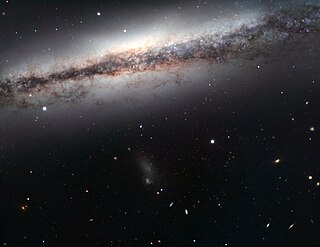
NGC 3628, also known as the Hamburger Galaxy or Sarah's Galaxy, is an unbarred spiral galaxy about 35 million light-years away in the constellation Leo. It was discovered by William Herschel in 1784. It has an approximately 300,000 light-years long tidal tail. Along with M65 and M66, NGC 3628 forms the Leo Triplet, a small group of galaxies. Its most conspicuous feature is the broad and obscuring band of dust located along the outer edge of its spiral arms, effectively transecting the galaxy to the view from Earth.
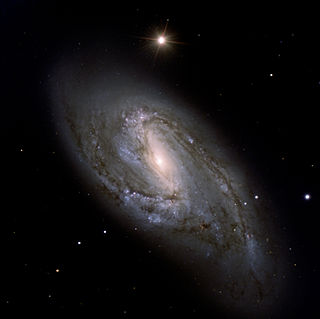
Messier 66 or M66, also known as NGC 3627, is an intermediate spiral galaxy in the southern, equatorial half of Leo. It was discovered by French astronomer Charles Messier on 1 March 1780, who described it as "very long and very faint". This galaxy is a member of a small group of galaxies that includes M65 and NGC 3628, known as the Leo Triplet, or the M66 Group. M65 and M66 make a popular pair for observers, being separated by only 20′.

NGC 6744 is an intermediate spiral galaxy about 30 million light-years away in the constellation Pavo. It is considered as a Milky Way mimic in our immediate vicinity, displaying flocculent (fluffy) arms and an elongated core. It also has at least one distorted companion galaxy superficially similar to one of the Magellanic Clouds. It was discovered from Parramatta in Australia by Scottish astronomer James Dunlop on 30 June 1826.

NGC 5921 is a barred spiral galaxy located approximately 65 million light-years from the Solar System in the constellation Serpens Caput. It was discovered by William Herschel on 1 May 1786. In February 2001 a type II supernova was discovered in NGC 5921.

NGC 1042 is a spiral galaxy located in the constellation Cetus. The galaxy has an apparent magnitude of 14.0.

NGC 247 is an intermediate spiral galaxy about 11.1 Mly away in the constellation Cetus. This distance was confirmed in late February 2011. Previous measurements showed that the galaxy was about 12.2 Mly away, but this was proved to be wrong. NGC 247 is a member of the Sculptor Group, and is 70 000 light years in diameter.

NGC 27 is a spiral galaxy located in the constellation Andromeda. It was discovered on 3 August 1884 by Lewis Swift. It forms a galaxy pair with the nearby UGC 95.

NGC 52 is an edge-on spiral galaxy in the constellation Pegasus. It was discovered on September 18, 1784 by William Herschel. He described it as "very faint, small, extended."

NGC 53 is a ringed barred spiral galaxy in the constellation Tucana. It was discovered by John Herschel on 15 September 1836. He described it as "very faint, small, extended". The galaxy is approximately 120,000 light-years across, making it about as large as the Milky Way.

NGC 178 is a Magellanic spiral galaxy in the constellation of Cetus. The compiler of the New General Catalogue, John Louis Emil Dreyer noted that NGC 178 was "faint, small, much extended 0°, brighter middle". It was discovered on November 3, 1885 by Ormond Stone.
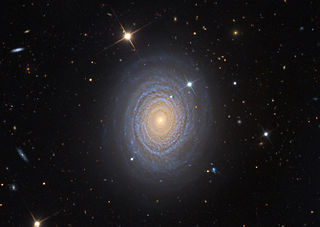
NGC 488 is a face-on spiral galaxy in the constellation Pisces. It is at a distance of about 90 million light-years away from Earth. Its diameter is estimated to be 52,6 Kpc. The galaxy has a large central bulge, and is considered a prototype galaxy with multiple spiral arms. Its arms are tightly wound. Star forming activity has been traced within the arms. The nucleus of NGC 488 has been found to be chemically decoupled, being twice as metal rich as the central bulge of the galaxy. NGC 488, with the exception of its smaller companions, that form NGC 488 group, is an isolated galaxy.
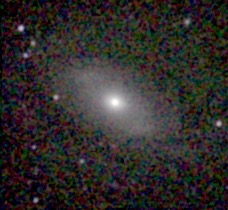
NGC 7098 is a doubled barred spiral galaxy located about 95 million light-years away from Earth in the constellation of Octans. NGC 7098 has an estimated diameter of 152,400 light-years. NGC 7098 was discovered by astronomer John Herschel on September 22, 1835.

NGC 4699 is an intermediate spiral galaxy located in the constellation Virgo. It is located at a distance of circa 65 million light years from Earth, which, given its apparent dimensions, means that NGC 4699 is about 85,000 light years across. It was discovered by William Herschel in 1786.

NGC 468 is a spiral galaxy in the constellation Pisces. With its distance being approximately 209 million light-years from Earth, it was discovered by John Frederick William Herschel in 1827.
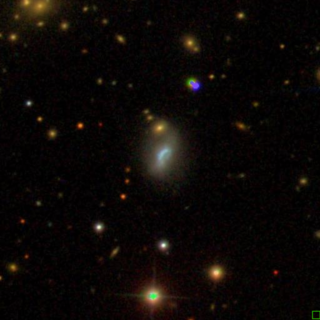
NGC 469 is a spiral galaxy in the constellation Pisces. With its distance being approximately 167 million light-years from Earth, it was discovered by Albert Marth in 1864.
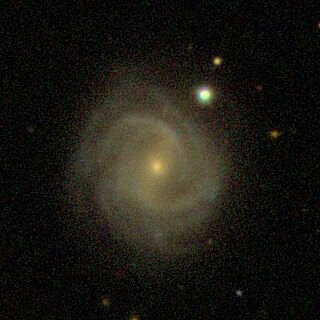
NGC 2503 is an isolated spiral galaxy approximately 254 million light-years away in the constellation Cancer. The galaxy was discovered on February 17, 1865 by astronomer Albert Marth.
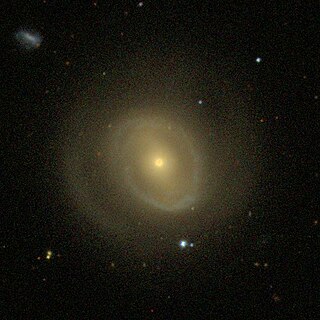
NGC 4454 is a barred spiral galaxy located about 123 million light-years away in the constellation of Virgo. NGC 4454 was discovered by astronomer William Herschel on April 17, 1784.
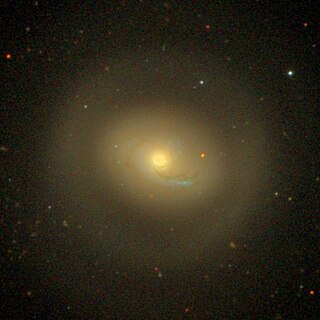
NGC 4457 is an intermediate spiral galaxy located about 55 million light-years away in the constellation of Virgo. It is also classified as a LINER galaxy, a class of active galaxy defined by their spectral line emissions. NGC 4457 Is inclined by about 33°. It was discovered by astronomer William Herschel on February 23, 1784. Despite being listed in the Virgo Cluster Catalog as VCC 1145, NGC 4457 is a member of the Virgo II Groups which form an extension of the Virgo cluster.

NGC 470 is a spiral galaxy in the constellation Pisces. Its distance being approximately 91 million lightyears from earth, it was discovered by Friedrich Wilhelm Herschel in 1784. The galaxy also weakly interacts with NGC 474.

NGC 4466 is an edge-on spiral galaxy located about 50 million light-years away in the constellation of Virgo. NGC 4466 was discovered by astronomer Bindon Stoney on February 26, 1851. The galaxy is a member of the Virgo Cluster.




















